User Intent Data – In a B2B context
'User intent data' are digital clues people leave across the web about their interests or prospective intentions. These clues, when collected and stored, become user or visitor intent data. 'User intent data' helps you define your target audience and then track the different stages of their buying journey. You can then mine data to reveal meaningful insights on customer preferences, behavior, and habits which you can use to identify your likely-to-buy customers. B2B user intent data comes from various sources like social media, exchanges, proprietary data, and press.
The three major sources of B2B user intent data
1st Party Data
- 1st party data come directly from your company’s proprietary sources and customers. This includes customer surveys, subscription data, data from your company website or apps and your CRM. This data details behaviors, interests or actions. As this data comes directly from your customers and accounts, it is the highest quality and most accurate data you have.
2nd Party Data
- 2nd party data comes from another company’s first party data. You can purchase this data directly from the source company without any middle man involved.
3rd Party Data
- 3rd party data comes from large repositories of aggregated data from various sources. Third party data owners collect such data from the publishers and other first party data owners by paying for it before selling this data through data exchanges. It is not exclusive data since your competitors have access to it as well.
Data providers web crawl B2B related and consumer websites for B2B-focused activities, used in 'account-based marketing' (ABM), which require data at the account or company level. Whether it is first, second and third party data, they can segment the final user intent data into different categories or levels based on their Marketing applications.
| Application | Type of Data |
|---|---|
| Lead Scoring | Individual/Contact level data |
| Ad Targeting | List of active accounts without contact name/details |
| Total Addressable Market | Industry, Revenue, Technology Installed etc |
Machine learning algorithms use these data segments to predict the relevant decision, score, or probability for various B2B marketing applications and for different stages of a buyer’s lifecycle.
New 'demand waterfall' model by SiriusDecisions depicting the value of intent data:
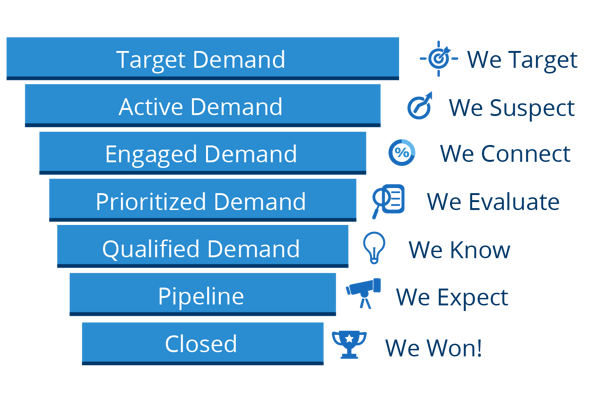
Predictive Prospecting
'Predictive Prospecting' uses machine learning algorithms to identify prospective companies in the market who intend to buy specific products and services. Although the B2C market is bursting with innovation in predictive prospecting using advanced analytics, the B2B market is still making an entry into the predictive prospecting area to bring new elements of value, as well as revenue, to the customers.
Predictive prospecting is about the probability of a prospect buying a company's product or service. A probability score then points to the likelihood of that prospect buying the product or service. 'Machine learning' algorithms learn the repeated buying patterns in human behavior using the 'user intent data' fed to them, and hence, identify new buyers of a company’s product.
Predicting First-Time Buyers
By evaluating non-transaction customer data such as job title, industry, geography, etc., predictive analytics can predict the likelihood a prospect will purchase using various mathematical models. These models compare the pre-purchase behavioral attributes of millions, (or thousands, depending on the amount of historical data available), of previous customers who have purchased with the pre-purchase behavior of the prospective customer and, then, tag or score the prospective customers. You can then prioritize your marketing efforts on these business prospects.
Predicting Repeat Buyers
Every company’s goal is to have loyal customers who make large revenues and profits for the company. For repeat purchases, the 'likelihood to buy' model evaluates interactions that are similar to first-time buyers as well as earlier transactions with the company. These include past purchases, communication with customer-service, returned purchases and so on. A very basic workflow of a 'machine learning' algorithm supplied with 'user intent data' to predict a prospect in B2B space is as follows:
1. Identifying the prospect and creating a Persona
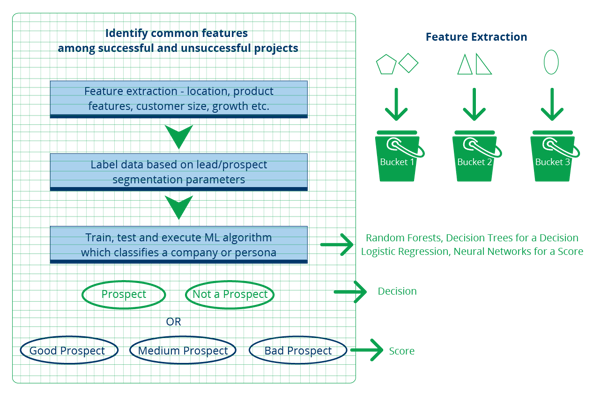
2. Cost-Benefit matrix of our predicted model
After the model prediction your sales/marketing managers need to go through the exercise below for a B2B sales cost estimation. A cost-benefit matrix shows the sum of benefits minus the costs of each prediction. In the above example the model predicts two possible outcomes: “yes – the business is a prospective buyer” and “no – the business is not a prospective buyer”.
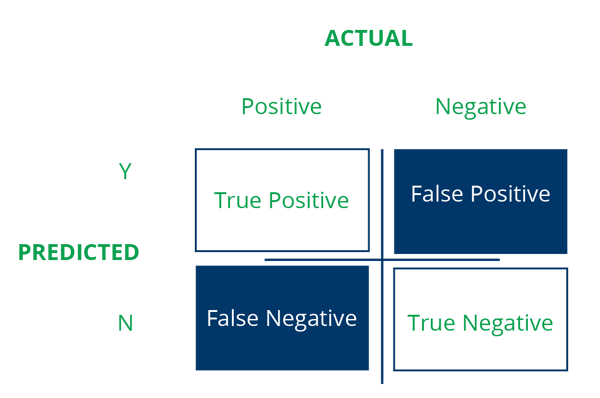
For each predicted situation:
The right prediction of the model is:
- True positive (the model predicted that the customer would buy and they did) or
- True negative (the model predicted the customer would not buy and they did not)
The wrong prediction of the model is :
- False positive (the model predicted that the customer would buy but they did not) or
- False negative (the model predicted the customer would not buy but they did)
Each of the above outcomes has its own cost and benefits.
3. Customized Sales Pipeline
You can extend AI applications further to create a customized sales process for the above identified prospects using more complex ML models such as 'recurrent neural networks' and 'reinforcement learning'. These models memorize the set of actions performed over time on the identified prospects and their responses afterwards so you can use them on the current task.
The above workflow is just one example of a machine learning application in a B2B market space. There are numerous other applications and models you can implement.
Applications of Artificial Intelligence in B2B Marketing space
- 1. Account-based (Target) Marketing Strategy
After identifying the total addressable market, a company filters the account list down to what best fits with its business plans and needs. AI can help filter such accounts based on certain thresholds and buying behavior. This, in turn, helps to develop an optimized marketing strategy to engage prospective accounts before competitors do.
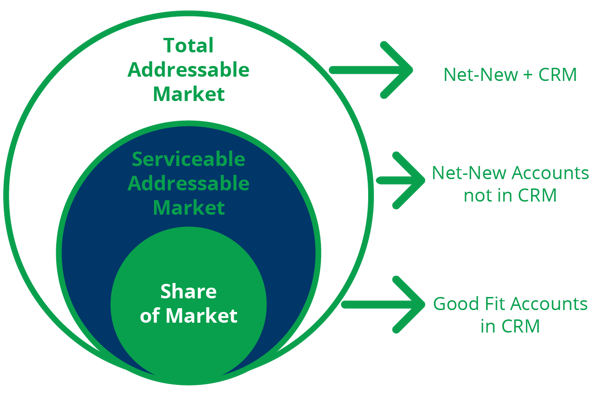
- 2. Personalization or content placement
You can use the insights on what people read to influence content strategy across the funnel. AI can build a profile of interests on a business account user and display any relevant content on your company’s website - 3. Hyper-targeted ads
Based on what the account users research, AI can prioritize ad topics to encourage stronger engagements. - 4. Develop a focused sales team
At the research stage, AI’s can help by filtering accounts in to a list that categorises prospects by intent or behavioral information for your sales development representatives (SDRs) to use. In the next stage, the SDR can then personally reach out to the business prospect to continue the process. - 5. Lead Scoring
Lead scoring is a marketing process which attributes a numerical score to leads based on behaviors and other factors to identify 'marketing qualified leads' (MQLs). Predictive analytics can calculate a more informed score based on historical data, without assumptions and human bias, and help increase your conversion rates. - 6. Cross-sell/Up-sell to existing customers
Predictive Analytics help businesses understand their existing account’s future needs so they can provide the customer with prescriptive products or recommendations. This helps with retaining customers as it can help increase the loyalty a prospect has for your company and build on the relationship with that customer.
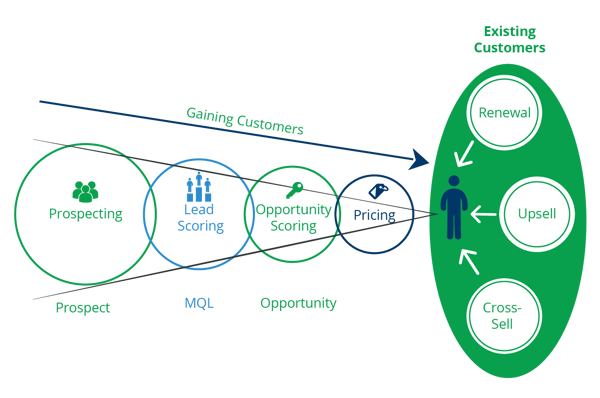
- 7. Omni-Channel Marketing
Customers/Users can engage with a business through various channels including the business’s website, social media, catalog, and mobile app and through various devices. Omni-channel marketing ensures consistent and integrated customer experience through these channels and devices. AI can help influence buying or intent behavior across the channels by using customer interaction on one channel to personalize the interaction on another
Conclusion
A study by the technology research firm Nucleus Research showed compelling evidence that AI-assisted B2B marketing increases business for a commerce company by 5%, and created 25-35 new sales opportunities in the first month. It also boosted the company’s sales by $150,000 for that month. Predictive prospecting aids sales leaders in engaging in cost-reducing and time saving marketing efforts while increasing the conversion rates and sales pipeline.


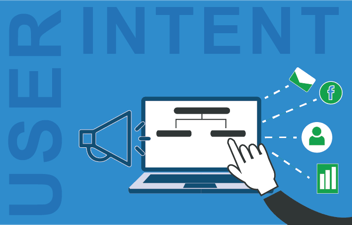
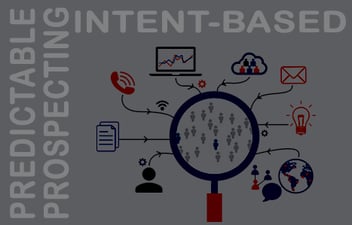
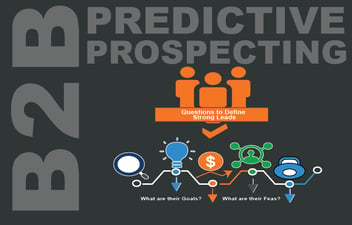
Leave a Comment